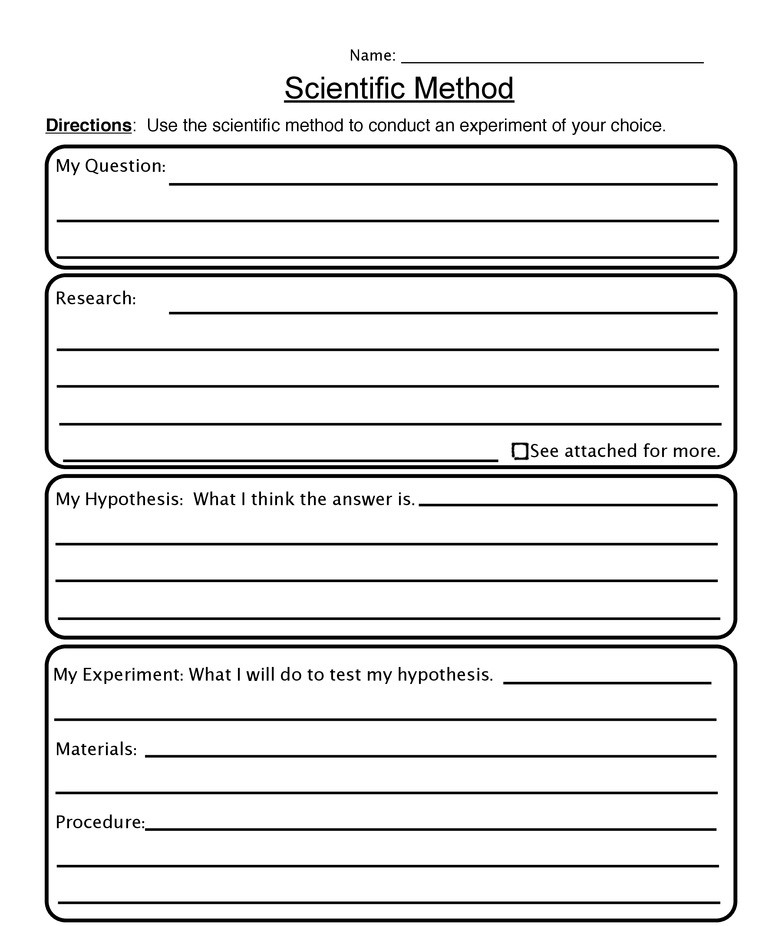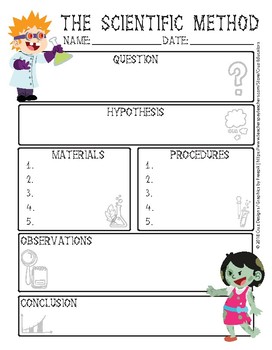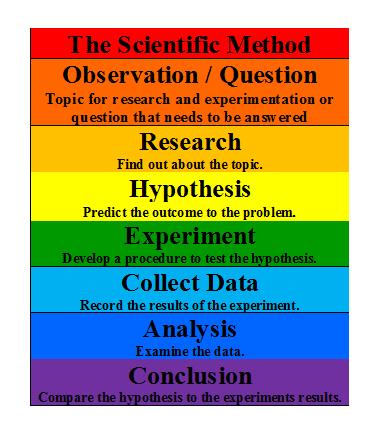Scientific Method
Scientific Method Definition:
The scientific method is defined as a series of processes that people use in order to gather information about the world around them. They do this to improve their knowledge by gaining more information and attempt to describe why and how things happen. This method includes making observations, forming questions, making a hypothesis, doing an experiment, analyze the data, and at the end form a conclusion. Scientific Method steps and definitions are described below:
Scientific Method Steps:
The exact steps used for scientific methods can vary from source to source, but generally the same as acquiring knowledge by observation and testing.
- Making an Observation:
Making an observation about the around world is the first step of the scientific method. Before the work of hypotheses or perform and experiment, it must be necessary to think about some sort of phenomena happening.
- Asking a Question:
After making the observation, it is a must-ask a question on the basis of their observation. In some cases, this step listens first before the making of observation in a scientific method. But in reality, these both making observation and asking question occurs at the same time, as no one can look confusing occurrence and thinks immediately, ‘why is it occurring? Or how it occurs?’. When observation was made and asking the question is done, the scientific method moves to the next step.
- Forming a Hypothesis:
A hypothesis is a guess to describe the phenomena happening on the basis of prior observation. The hypothesis may be specific or general depends on the asked question, but all hypotheses must be testable by gather evidence which can be measured.
- Performing an Experiment:
An experiment must be done after forming of the hypothesis. It is done in order to test the hypothesis. An experiment must have an independent variable that manipulated by a person doing the experiment, and a dependent variable that is the thing which is measured. During the experiment performing, the data is collected.
- Analyzing Data:
The data must be analyzed after the performing of the experiment and collecting of data. The research experiments are often analyzed with statistical software to determine the relationship among data. In a simple experiment, one would look at data and observe how they correlate with change in independent variables.
- Forming a Conclusion:
Forming a conclusion is the last step of the scientific method. If the data support the hypothesis, then the hypothesis can describe the phenomena. If data do not support to hypothesis, then more observations have to made must, then the new hypothesis will create and all scientific methods will be used again. When the conclusion is drawn, the research may represent in order to inform others and receive input about the validity of the conclusion from research.
Scientific Method Experiments:
Scientists have conducted many experiments using the scientific method for hundreds of years. A scientist, Francesco Redi performed an experiment on spontaneous generation. In the 17th century, when Redi was lived, people believed that organisms are spontaneously arising from organic material. As people believed that maggots were formed by meat which left out to sit. Redi represents an alternate hypothesis that maggots were the eggs of flies. He conducts the experiment for this purpose by leaving four jars of meat out, as some uncovered and some covered by the muslin. The flies got in the uncovered jar and after a short time; maggots looked, while the covered jar appear maggots on the outer surface of the muslin. By this experiment, Redi concludes that maggots did not arise from meat, but actually they are the eggs of flies.
Scientific Method Example:
Example of the Scientific Method: The scientific method not only used by scientists in their searches but also used by people in daily life. For instant, if you are at home at a light bulb goes out. First, you observe that the light bulb is out, this is observing. Then, a question arises in your mind, ‘why is light bulb out?’ and comes with possible guesses, as a hypothesis. Then, you would perform a small experiment to test hypothesis, as you would replace the bulb. If light bulb turned back, you would conclude that light bulb had burned out, but if light bulb still goes out you would come up with hypotheses and test that one by one.
Scientific Method Examples in Everyday Life
Here are a few examples of the scientific methods from our daily life.
Example 1 :
If You try to ON a light switch, and the bulb does not give light.
Observation: The light bulb did not give light.
Question: Is the light bulb blustered?
Hypothesis: The light bulb is blown.
Prediction: If we substitute the bulb and then it will give lights, then my hypothesis is confirmed. If the bulb will not give light, then my hypothesis is nullified.
Experiment: Replace the bulb.
Result: The new bulb illuminates up.
Conclusion: My hypothesis is confirmed. The bulb was blown.
Example 2 :
It is another example in which scientific methods can also be implemented to study the natural world.
Observation: If the Bean plant is sown within the soil either it will grow quickly outside or inside of the soil.
Null Hypothesis: There is no significant difference between growing a bean plant indoors or outdoors.
Alternative hypothesis: There is a statistically significant difference between the two growing situations for bean plants.
Experimentation: For this purpose, plant four bean plants in alike pots by utilizing the same nature of the soil. While putting two of these pots in an outdoor area, and located the other two pots in an indoor location.
Analysis: Collect and analyze the data and regulate or observe how these plants grow in both environments within three weeks of observation.
Conclusion: On the basis of data analysis, we concluded that either the Bean plant is positioned inside or outside of the house it will produce more rapidly.
Why is the Scientific Method Important?
- It’s important to note that even though many scientists do use the idea of the Scientific Method for their daily work, they do not necessarily use each of the individual steps.
- Also, a similar version of the Scientific Method has been adopted by businesses all over the country.
- It teaches employees and management to diagnose a problem, think about ways of solving that problem, then testing those ideas to try and solve the problem. It’s the same process but with a twist!
Scientific Method for Kids

Scientific Method Worksheets






